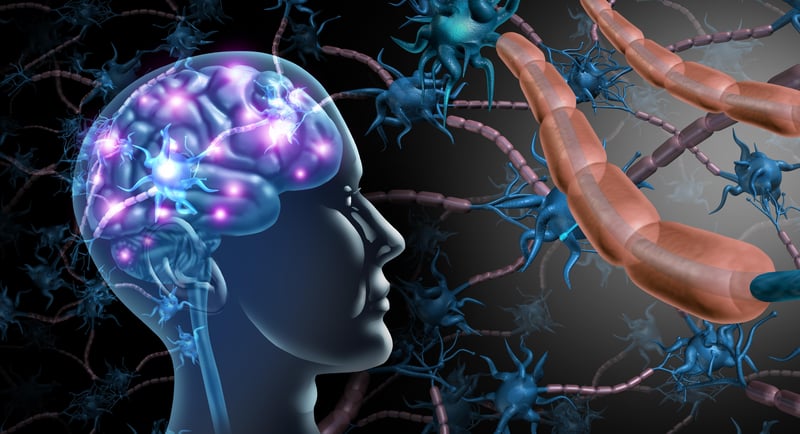Get Healthy!

- Dennis Thompson
- Posted May 10, 2023
Science Reveals Key Driver of Alzheimer's, and How Newly Approved Drug May Fight It
Researchers have isolated for the first time a free-floating form of amyloid beta that appears to be a key driver of Alzheimer's disease.
Further, they argue that a newly approved Alzheimer's drug -- lecanemab (Leqembi) -- directly targets these small, complex chains of amyloid beta (A-beta) called fibrils. The U.S. Food and Drug Administration approved lecanemab in January.
The A-beta fibrils were found by soaking brain tissue samples from Alzheimer's patients in a saline solution, then spinning the liquid in a centrifuge, said senior researcher Dr. Dennis Selkoe, co-director of the Brigham and Women's Hospital Center for Neurologic Diseases, in Boston.
Such fibrils had been found stuck together in the amyloid plaques that are a hallmark of Alzheimer's, but they'd never before been found floating freely in brain tissue fluid, Selkoe said.
"The tiny, diffusible fibrils were identical to the fibrils that make up the myriad amyloid plaques in the patients' brains,"Selkoe said. "These tiny fibrils bind to the outside of nerve cells, and they also can clump together to make amyloid plaques."
Amyloid beta is a naturally occurring substance in human brains, but it's typically thought to be entirely soluble. "That is, it's like putting sugar in a cup of coffee,"Selkoe said. "It would just dissolve."
This research shows that "the smallest toxic form of the amyloid protein is a tiny fibril, rather than an entirely soluble molecule,"Selkoe said.
Further testing showed that the Alzheimer's drug lecanemab specifically works to clear these fibrils from the brain, Selkoe said.
Lecanemab is a monoclonal antibody that attaches to these A-beta fibrils, Selkoe said. When it binds to a fibril, the antibody attracts the attention of brain immune cells called microglia.
"It causes them to phagocytose -- to engulf the fibers and clear them -- but they only do it when an antibody to the fibrils is attached,"Selkoe said. "We know that people with Alzheimer's just keep on getting worse and worse over months and years, and it seems that their microglia are not able to digest and clear amyloid fibrils or amyloid plaques by themselves."
The new study represents "a novel way to understand these beta amyloid states, and whether they exist only as part of plaques or also in the surrounding environment of the brain,"said Heather Snyder, vice president of medical and scientific relations for the Alzheimer's Association.
"The researchers suggest that amyloid beta exists, or can exist, in both, and that the newly FDA-approved drug, lecanemab, may bind to both,"Snyder said. "This multiple binding ability may help inform how lecanemab acts in the brain, even if the outcome measure used in the clinical trials was specific only for the plaques."
The FDA approved lecanemab under an accelerated process, and is expected to consider the drug for full approval this summer, Selkoe said.
However, the U.S. Centers for Medicare and Medicaid has resisted covering drugs like lecanemab and its predecessor, aducanumab (Aduhelm).
These first-in-class treatments are expensive, and Medicare regulators say there's not enough clinical evidence yet that shows the drugs actually help slow or halt mental decline in Alzheimer's patients.
Selkoe hopes this new research will help inform Medicare's future decision-making surrounding these Alzheimer's drugs.
"This basic science study fully supports the so-called amyloid hypothesis, and in particular it says lecanemab is specifically able to neutralize the synaptic toxic effects,"Selkoe said. "If the drug gets full FDA approval, I think this would make it considerably more likely that Medicare would say this deserves to go to patients and be covered."
The discovery of these fibrils also could lead to even better Alzheimer's medications, Selkoe added.
"You could use this material that we isolated as an immunogen, that is as an antigen, to make new antibodies that we could then compare to lecanemab,"Selkoe said. "We actually have seven or eight new antibodies that we've made that have not yet been analyzed deeply. We have them in our freezers and we're going to compare them to lecanemab to see if they have some properties that are at least as good."
However, there are probably other pathways that lead to the synapse damage associated with Alzheimer's, given that newer drugs under development also clear A-beta but don't bind to fibrils the way lecanemab does, said Dr. Sam Gandy, associate director of the Mount Sinai Alzheimer's Disease Research Center, in New York City.
"We need to quench every toxic pathway in order to get a complete win,"Gandy said. "We won't know how many pathways there are until we test a combination of individual antibodies that target each different pathway. We may have to target pathway A plus B plus C before we totally stop all pathways to toxicity."
The new study was published online May 10 in the journal Neuron. It was funded by the U.S. National Institutes of Health, the Alzheimer's Association, Brigham and Women's Hospital, and the UK Medical Research Council.
More information
The U.S. National Institute on Aging has more about what happens to the brain in Alzheimer's disease.
SOURCES: Dennis Selkoe, MD, co-director, Brigham and Women's Hospital Center for Neurologic Diseases, Boston; Heather Snyder, PhD, vice president, medical and scientific relations, Alzheimer's Association; Sam Gandy, MD, PhD, associate director, Mount Sinai Alzheimer's Disease Research Center, New York City; Neuron, May 10, 2023, online



